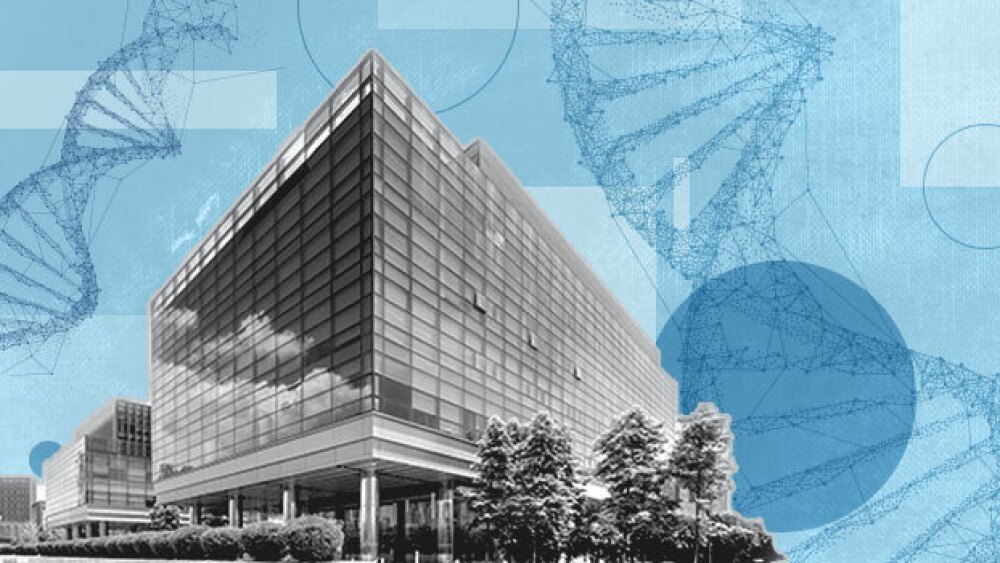The regulatory filing puts the company alongside Vertex and CRISPR, which also await FDA approval for their SCD gene therapy.
Pictured: Illustration showing blood vessel with normal and sickled red blood cells / Adobe, tussik
bluebird bio announced Monday that it has submitted a Biologics License Application (BLA) for lovotibeglogene autotemcel (lovo-cel), a gene therapy treatment for sickle cell disease (SCD).
Bluebird is seeking approval to sell lovo-cel as a treatment for SCD patients ages 12 and older with a history of vaso-occlusive events—painful episodes that occur when sickle cells clog blood vessels.
This would be the first FDA-approved gene therapy for a disease of such large public health impact, Fyodor Urnov, director of technology and translation at the Innovative Genomics Institute (IGI) who is not affiliated with bluebird, told BioSpace via email. IGI is also working to develop an SCD gene therapy.
The submission by bluebird represents the next step in the race for FDA approval among companies developing gene-modifying treatments for SCD. On April 3, Vertex and CRISPR completed their rolling submission of a BLA for their experimental SCD treatment, exagamglogene autotemcel (exa-cel), and requested the FDA’s Priority Review.
Bluebird has also requested Priority Review and estimates that, if the request is granted, the review process will be shortened from 10 to 6 months.
Bluebird’s chief medical officer Richard Colvin told BioSpace via email that in the long run, competition benefits patients.
Urging cooperation instead of competition among companies, Urnov added that currently, no single company can come close to manufacturing enough gene therapy doses to treat every American with SCD.
An estimated 100,000 people in the U.S. have SCD, according to the CDC. Every year in sub-Saharan Africa, about 236,000 babies are born with SCD, 90% of whom may die before age five, according to the New England Journal of Medicine.
New Approaches to Treating Sickle Cell Disease
SCD is a genetic disorder caused by a single-nucleotide mutation in the beta-globin gene, which encodes a key component of hemoglobin. The mutation causes the resulting hemoglobin, called hemoglobin S, to become misshapen and stiff, which in turn causes red blood cells to curl into sickles. Sickle cells pile up and clog blood vessels in what’s called a vaso-occlusive crisis, during which tissues are starved for oxygen. Sickle-cell disease is also characterized by chronic anemia, among other symptoms.
The gene-editing approaches in development all involve a similar process, Urnov said. That process includes collecting patients’ hematopoietic stem cells, genetically modifying them to correct or work around the SCD mutation, and reintroducing the modified cells into patients.
Bluebird’s candidate treatment uses a lentiviral vector to insert multiple copies of a modified beta-globin gene into a patient’s stem cells, according to the company. Bluebird refers to this as gene addition, rather than gene editing. The resulting modified beta-globin protein, called anti-sickling hemoglobin, is designed to reduce the proportion of hemoglobin S to functional, adult hemoglobin (hemoglobin A) and thereby reduce the number of sickled red blood cells.
CRISPR and Vertex’s candidate, exa-cel, in contrast, uses the CRISPR-Cas9 system to edit patients’ stem cells to produce high levels of fetal hemoglobin in red blood cells, according to a release from the companies. Fetal hemoglobin holds oxygen more tightly than hemoglobin A but is only produced during gestation and the first six months of infancy.
The BLA for exa-cel is for the candidate as a treatment for both SCD and transfusion-dependent beta-thalassemia, according to the statement. (Bluebird developed another gene therapy to treat beta-thalassemia that received FDA approval in August 2022.)
Unlike these other treatment approaches, IGI’s treatment in development uses CRISPR/Cas9 to correct the original beta-globin mutation in patients’ stem cells, Urnov said.
Pending Submissions
The lovo-cel BLA submission rests on efficacy results from 36 patients treated with lovo-cel in an ongoing Phase I/II trial, with a median of 32 months follow-up, and two patients from a Phase III trial, with 18 months follow-up. The submission also includes data from 50 patients treated across the lovo-cel clinical trials, according to bluebird.
As for safety, most severe adverse events were due to SCD or to conditioning with busulfan—the chemotherapy used to clear the patient’s body of any non-modified stem cells before the stem cell transplant. Serious adverse events related to the treatment included anemia in two patients who had alpha-thalassemia; leukemia in two patients, both of whom died; and sudden cardiac death in one patient, according to bluebird.
“We have made improvements to our manufacturing and treatment protocols to improve both safety and efficacy,” Colvin said.
Vertex and CRISPR’s BLA submission earlier this month was supported by results from two Phase III studies and an ongoing long-term follow-up study, according to a release by the companies.
“The data [from trials of lovo-cel and exa-cel] are equally impressive with respect to disease-modifying activity,” Urnov said, though he would not speculate as to which candidate might receive FDA approval first.
“Overall, we are encouraged by this news and note that the timing of this submission should allow bluebird’s program to maintain a similar regulatory timeline as compared to exa-cel,” Baird financial analyst Jack Allen wrote in a message to clients, according to Endpoints News.
Vertex and CRISPR did not respond to requests for comment about the bluebird BLA submission.
Ashley P. Taylor is a freelance science and health journalist based in New York City.
Correction (April 25): This story has been updated from its original version to correctly state that bluebird’s ongoing Phase I/II trial involved a median of 32 months of follow-up, not 36. BioSpace regrets the error.





